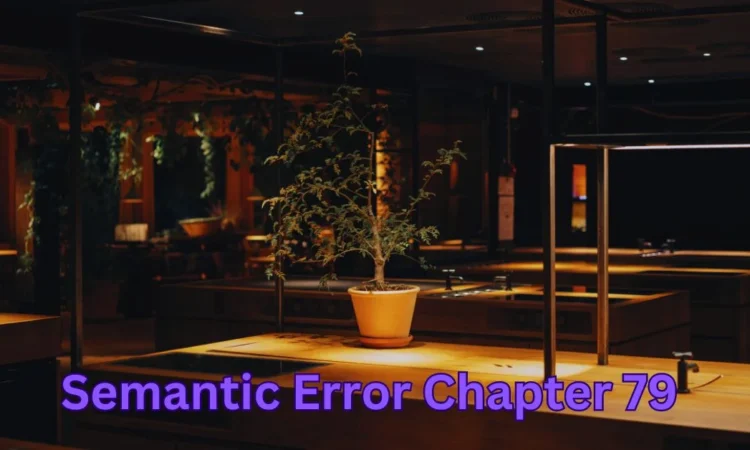Navigating the Narrative: Unraveling the Semantic Errors of Chapter 79

Within the vast realm of literature, Chapter 79 stands as a unique juncture where the art of storytelling intersects with the intricacies of language. In this exploration, we embark on a journey to unravel the semantic errors embedded in Chapter 79, peeling back the layers of narrative complexity to reveal the profound impact these linguistic nuances have on the reader’s experience.
The Language of Storytelling:
At the heart of any narrative lies the language used to convey the tale. Chapter 79 is no exception, employing a diverse array of words to paint vivid imagery and evoke emotions. However, as we delve into the text, we encounter semantic errors—subtle deviations from linguistic norms that add a layer of complexity to the storytelling process.
The Dance of Meaning:
Semantic errors in Chapter 79 are not mere oversights; they are a dance with meaning, leading readers through a labyrinth of interpretations. Words that carry nuanced connotations may diverge from their expected usage, challenging readers to navigate the narrative landscape with heightened attentiveness. This intentional play with semantics invites us to question the very fabric of linguistic expression within the context of the story.
Ambiguity as a Narrative Tool:
Far from detracting from the narrative, semantic errors in Chapter 79 serve as tools of ambiguity. Purposeful or inadvertent deviations from conventional language use introduce an element of uncertainty, encouraging readers to engage actively with the text. The resulting ambiguity becomes a catalyst for multiple perspectives, sparking discussions and fostering a more dynamic reading experience.
Character Depth and Linguistic Nuance:
Characters within Chapter 79 are not immune to the influence of semantic errors. Dialogues and descriptions colored by linguistic inconsistencies contribute to the multifaceted nature of character dynamics. Readers find themselves decoding subtle shifts in characterization or unexpected plot twists arising from the semantic choices made by the author. These errors, intentional or not, breathe life into the characters, making them more relatable and human.
Engaging the Reader’s Cognitive Landscape:
The semantic errors within Chapter 79 trigger a cognitive dissonance that draws readers into a state of active engagement. As they grapple with linguistic incongruities, readers become co-creators of meaning, contributing their interpretations to the evolving narrative. This symbiotic relationship between author and reader transforms the act of reading into a dynamic and intellectually stimulating experience.
Conclusion: Embracing Imperfections in the Tapestry of Language
Chapter 79, with its semantic errors, invites us to appreciate the imperfections within language as integral elements of the storytelling tapestry. As we navigate the narrative landscape, we discover that these linguistic nuances are not disruptions but rather enhancements, enriching the reader’s experience and challenging traditional notions of storytelling. In embracing the semantic errors of Chapter 79, we find a celebration of the artistry that lies within the interplay of words and the limitless possibilities they offer to both storyteller and audience.





